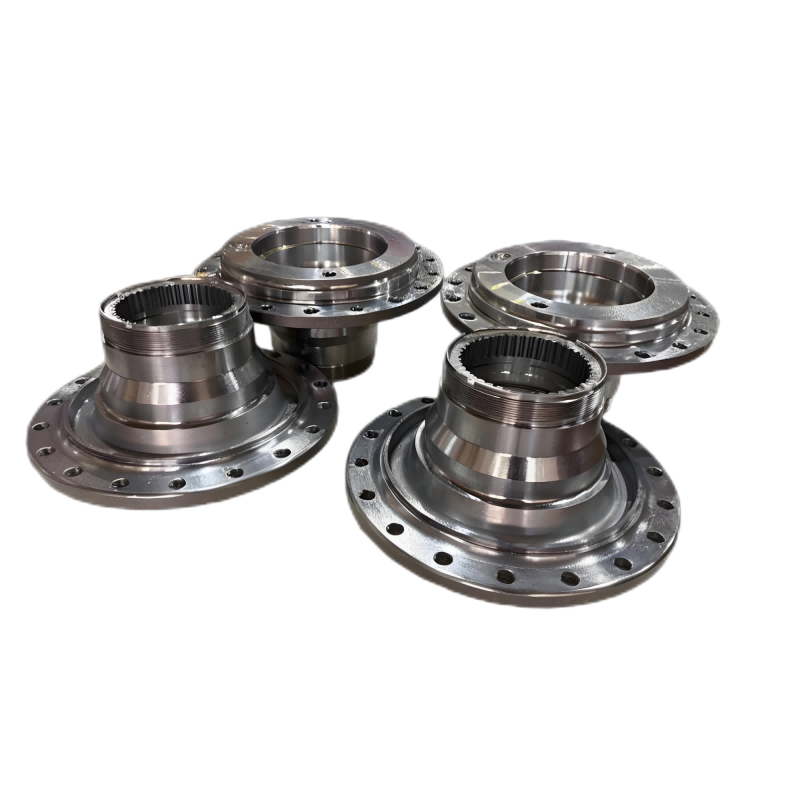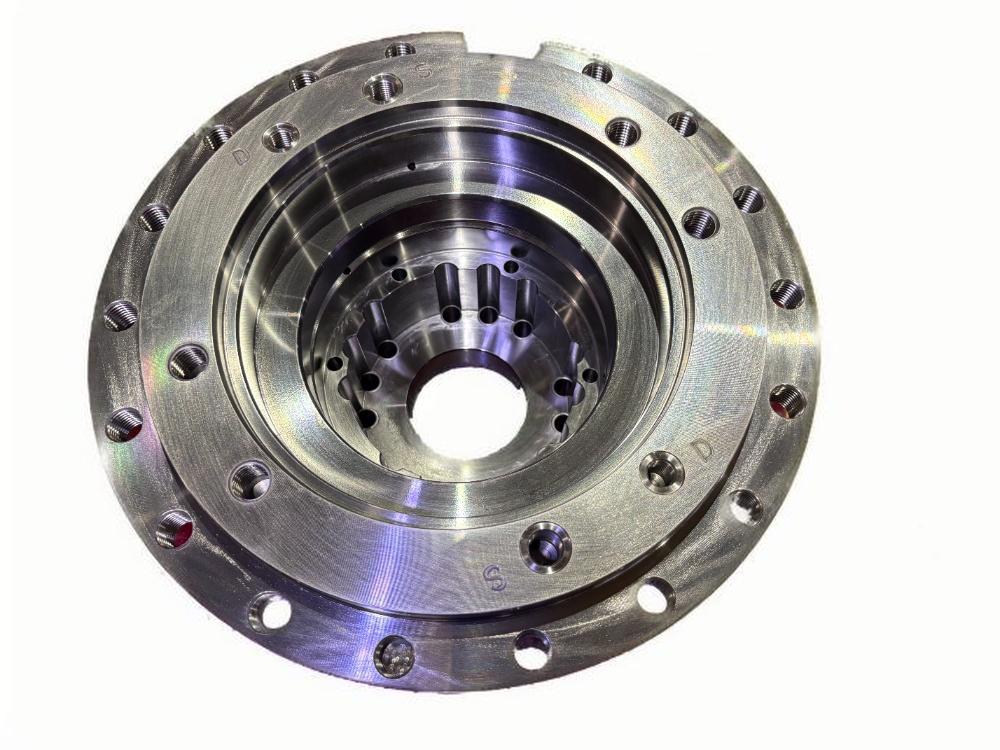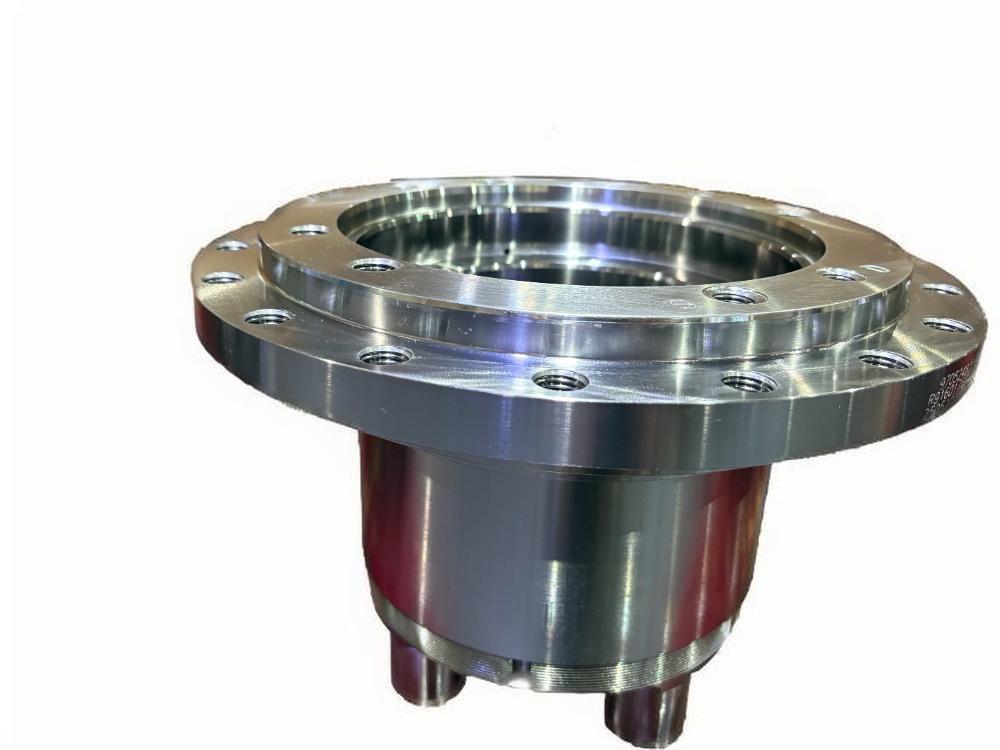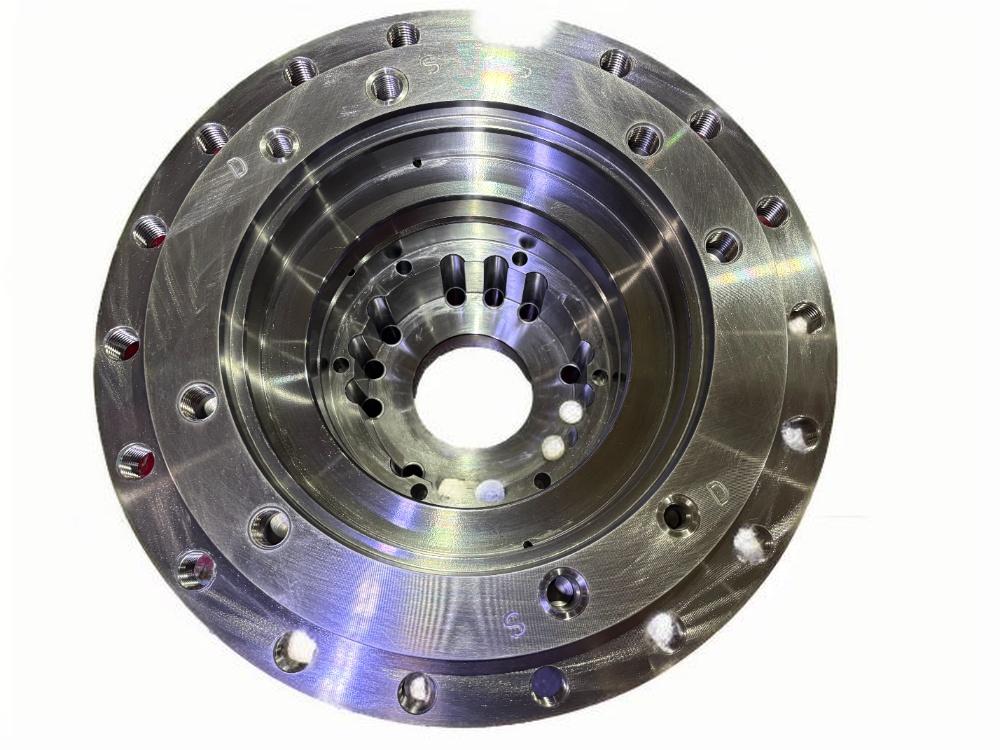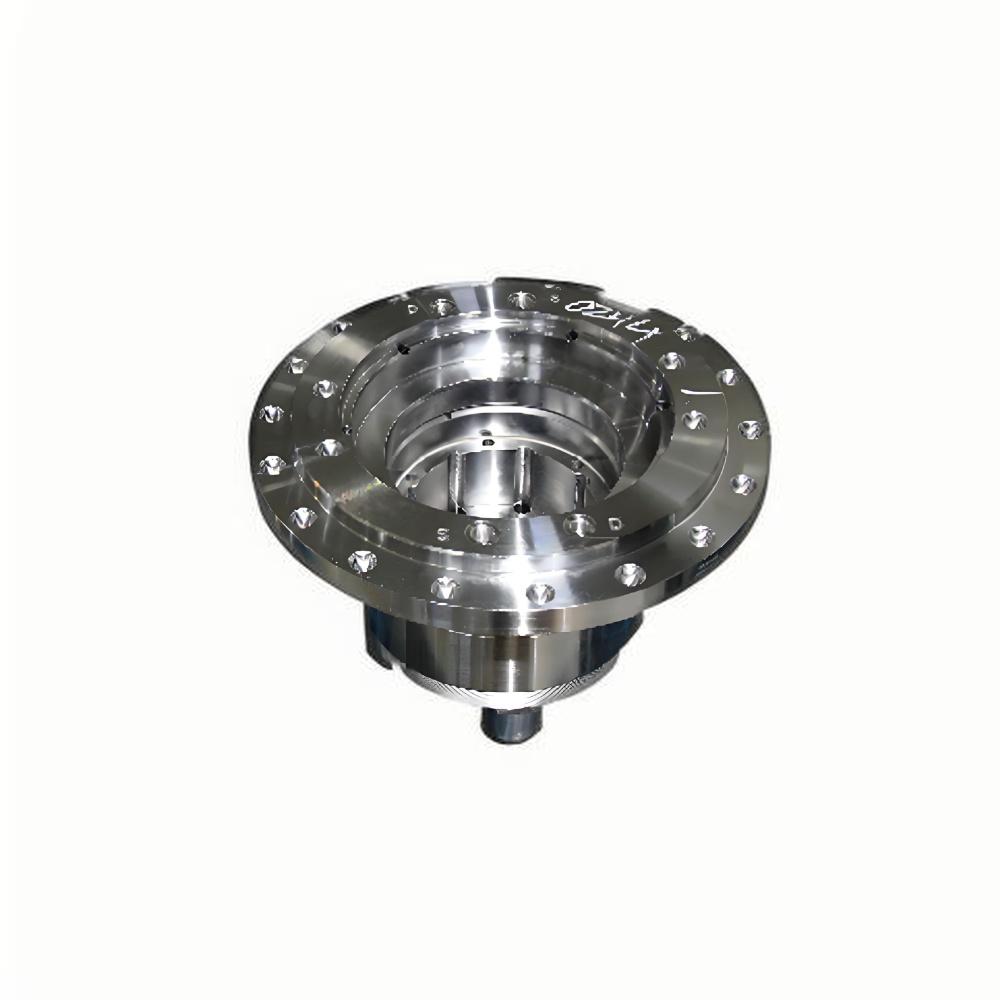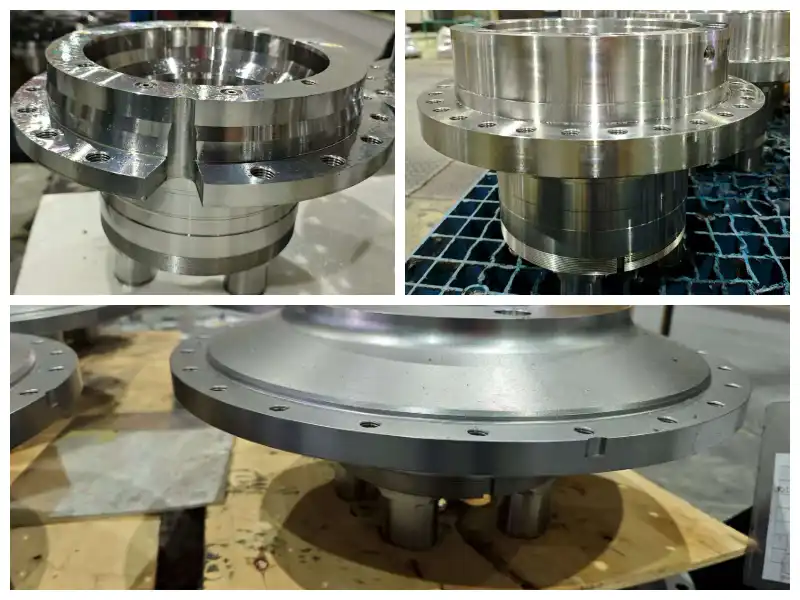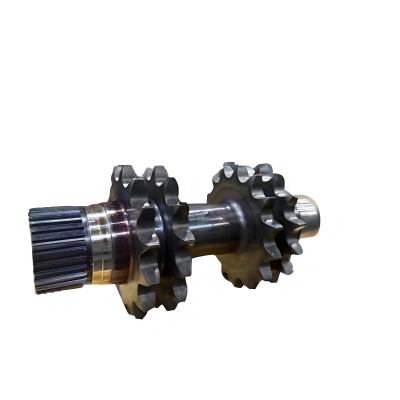Support Shaft Custom
1.Material:42CrMo/40Cr
2.Machining accuracy:±0.01mm
3.Mold opening cycle:About 45 days
4.Craft:Forging
5.Advantages:
Our strict process inspection ensures every product meets defect-free standards.
Streamlined one-stop processing delivers efficiency and cost savings.
From standard to custom, our wide product range solves all your needs.
6.Weight:Material usage and end-product weight will be derived from the Client’s provided drawings.
Product Introduction:
As essential foundational components in mechanical systems, support shafts primarily function to hold rotating bodies in place, transfer loads, preserve motion precision, and reduce frictional wear. Their key feature is delivering steady mechanical backing to rotating equipment, which guarantees smooth power transfer and stable structural performance. Being cylindrical mechanical parts, support shafts are typically combined with bearings, seals, and lubrication mechanisms to create a fully functional support assembly. Despite their apparent simplicity, support shafts act as the "backbone" of industrial machinery—from tiny micro-shafts in small devices (e.g., Ø2.3mm) to large ship propulsion shafts that extend over multiple meters. Three core needs consistently guide their design: load-bearing capability, force transfer efficiency, and long-term durability. Looking forward, driven by progress in intelligent manufacturing and the development of new materials, support shafts will also undergo evolution toward lightweight integration, smart sensing, and environmentally friendly upkeep, continuing to provide a solid foundation for industrial innovation.
Produt Advantages:
As core components in mechanical systems, support shafts demonstrate considerable merits in structural design, material performance, functional versatility, and cost-effectiveness. Drawing on technical specifics and application cases, their key advantages are analyzed in a systematic manner below:
High Load-Bearing Capacity & Stability
Rigid Support: By virtue of optimized geometric configurations (e.g., stepped designs, reinforced ribs), support shafts can bear excessive radial and axial loads (for instance, heavy-duty solid steel shafts with a load capacity exceeding 20 kN), thus ensuring steady operation when subjected to impact or vibration.
Dynamic Balancing: Under high-speed operating conditions (such as wind turbine shafts running at 1,500 rpm), dynamic balancing calibration enables precise vibration control—with an accuracy of up to ±0.02 mm—avoiding accuracy degradation resulting from imbalance.
Compact & Integrated Design
Space Efficiency: Integrated support shafts (e.g., aluminum shafts produced by CSB) can achieve lengths of up to 3,000 mm while reducing the size of auxiliary support structures. This makes them well-suited for space-limited applications like robotic arms and compact machinery.
System Simplification: Dual-purpose support shafts act as structural backbones, removing the requirement for extra supports and lowering both installation complexity and associated costs.
Future Innovation Trends
As Industry 4.0 progresses, support shafts will evolve in the following directions:
Composite Materials: Carbon fiber-reinforced support shafts achieve a 30% weight reduction while improving fatigue resistance.
Intelligent Sensing: Embedded sensors (e.g., stress gauges) allow for real-time monitoring of deformation.
Remanufacturing and Repair: Laser cladding technology reduces replacement costs by 30%, which is in line with the demands of a circular economy.
These improvements will keep fueling the advancement of high-end equipment.
Production Process:
Raw material inspection→ Cutting→ Forging → Normalizing → Rough turning → UT → Quenched and tempered → Shot peening → MT → Finished turning → Drilling and Tapping → Shaping → CMM/GMM → Cleaning packaging
Packaging and Shipping
To ensure the quality, integrity, and timely delivery of your products, our team will implement a rigorous, multi-step pre-shipment process, with each stage designed to meet the highest standards of care and precision. The detailed workflow is as follows:
First, we will conduct a comprehensive pre-treatment of all products prior to shipment. This includes thorough cleaning to remove any residual dust, debris, or manufacturing by-products that may have accumulated during production—ensuring each item arrives in a pristine condition. We will then apply a professional rust-proofing treatment (such as anti-rust oil coating, corrosion-resistant film wrapping, or electroplating protection, depending on the product’s material and usage requirements) to shield metal components from oxidation, humidity, or environmental wear during storage and transit. Additionally, each product will be clearly labeled with essential information, including product model numbers, batch codes, material specifications, and handling instructions, to facilitate easy identification, inventory management, and proper care throughout the supply chain.
Next, our quality control team will perform a meticulous inspection of every treated product. This inspection goes beyond surface checks: we will verify the effectiveness of the rust-proofing treatment (e.g., testing coating adhesion or corrosion resistance for critical components), confirm that labels are accurate and securely attached, and assess overall product quality against predefined standards—such as dimensional accuracy, structural integrity, and compliance with your specific requirements. Any item that fails to meet these criteria will be flagged for rework or replacement immediately, ensuring no substandard products proceed to the next stage.
Finally, once all products pass inspection, we will package them using industry-grade, shock-absorbent materials (e.g., foam inserts, corrugated boxes, or waterproof packaging) tailored to the product’s size, weight, and fragility. This packaging is designed to prevent scratches, impacts, or moisture damage during handling and transportation. After packaging, the products will be safely stored in our climate-controlled warehouse—where temperature and humidity are monitored and regulated to maintain optimal conditions—until they are ready for dispatch. We will also update our inventory system in real time to track the location and status of each shipment, ensuring full transparency and enabling us to initiate delivery promptly once your dispatch instructions are received.
Company Strength:
Over the course of its dynamic 30-year development journey, the company has proactively expanded its presence across both domestic and global markets. Its product portfolio finds extensive application in a diverse range of high-demand sectors, including construction machinery, wind power generation, new energy vehicles, rail transit, petrochemical engineering, and mining machinery—catering to the critical operational needs of each industry.
On the international front, the company has forged in-depth collaborative relationships with world-renowned enterprises hailing from countries such as the United States, Canada, Germany, Italy, Belgium, and Japan. This global outreach has yielded remarkable results, with overseas revenue accounting for more than 50% of its total annual turnover—a testament to its strong competitiveness in the international marketplace.
Domestically, the company has also established strategic partnerships with leading high-end equipment manufacturers, including industry giants like Zoomlion, XCMG, Sany, Lingsheng, CRRC, Nanjing Gear, and Zhuzhou Gear. These alliances not only strengthen its supply chain integration but also drive joint innovation in product development.
Notably, within its product lineup, two core offerings stand out in terms of market performance: planetary reducer core forgings and medium-to-large lifting hook assemblies. Both products have secured the top position in domestic market share, solidifying the company’s leading status in China’s high-end equipment component industry.

